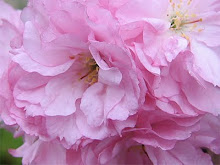
I can think of at least twelve different kinds of whole grains, more if you count all the different varieties and grain-like seeds. Any and all of these grains are eaten in a macrobiotic centering diet in their whole state (without grinding into flour, or rolled into flakes, for example) — See page 86 and then page 18 in Pocket Guide To Macrobiotics, by Carl Ferre (now revised and renamed Essential Guide To Macrobiotics).
Most of the grains benefit from soaking in water overnight, some of which need to be rinsed prior to soaking while others are rinsed after soaking. Toasting or roasting the grains in a dry pan prior to boiling in water is another way of making them more digestible and more yang. Julia Ferre's cookbook, Basic Macrobiotic Cooking, is an excellent guide for preparing and cooking these grains.
If you're not used to eating whole grains or you have trouble digesting them, brown rice cream or whole wheat cream goes down much easier for breakfast in the morning. Also, the tougher grains like Barley, Rye, and Wheat, get softer the longer you cook them (and presoaking for overnight helps make them more tender). Recipes are included in Zen Macrobiotics by George Ohsawa and in Basic Macrobiotic Cooking, by Julia Ferre.
The more you chew whole grains, the better they taste — this is for real!
I've tried each of these whole grains at least once, and some are my favorites. I've listed them alphabetically here for convenience:
Amaranth*
Barley — Whole, dehulled, also known as "pot barley"
Buckwheat — Whole, groats*
Corn (maize)
Millet
Oat — Whole, groats
Quinoa* (eaten like a grain, but it really is a seed)
Rice — Brown, short-grain
Rice — Brown, medium-grain
Rice — Brown, long-grain
Rice — Brown, sweet
Rice — Brown, Basmati (basmati means "fragrant")
Rye — Whole, berries
Teff
Wheat — Whole, berries
Wild Rice*
* Note: Amaranth, buckwheat, and quinoa seeds are technically not cereals/grains since they're not from the grass family. Whereas wild rice is a member of the grass family and therefore a cereal/grain, but it is not a "true rice" because it is not directly related to Asian rice. (And wild rice is the official state grain for Minnesota.) Amaranth is a relative of spinach, buckwheat is a relative of rhubarb, and quinoa is from the goosefoot family.
Here's what wikipedia says about: amaranth, buckwheat, quinoa, wild rice, and cereals/grains in general.
Related Blog Articles:
Vegetables For Centering
What Is A Macrobiotic Centering Diet?
South American Quinoa And Potatoes
Hot Cream Of Rice Cereal
Diet #7 by George Ohsawa
Diet #6 by George Ohsawa (What Is Nitsuke?)
The Importance Of Chewing






















































